30 min read
June 23, 2025
Summarize with AI:
The Ultimate Iceland Road Trip: Two Weeks Around the Ring Road and Westfjords with Zero Car Rental
Imagine circling the entire country of Iceland – over 1,332 kilometers (828 miles) of open road – and still venturing off the beaten path into remote fjords and tiny fishing villages. That’s exactly what a two-week self-drive around Iceland’s Ring Road (Route 1) plus the Westfjords offers: an ever-changing panorama of thundering waterfalls, steaming geothermal pools, black sand beaches, and snow-capped volcanoes looming over seaside cliffs. It’s the adventure of a lifetime for those who crave both iconic sights and hidden gems. And the best part? You are in the driver’s seat. There’s a reason so many travelers ask “Should I rent a car in Iceland?” – and the answer, for a trip like this, is a resounding yes.
With your own wheels, you can linger at a waterfall until a rainbow appears, take a spontaneous detour to a farm for fresh ice cream, or pull over whenever the Northern Lights dance overhead. In other words, you have total freedom – something no tour bus can match. Especially if you choose a local car rental company for your journey, you’ll travel with peace of mind. Zero Car Rental, an Iceland-based provider, will equip you with a sturdy, all-season vehicle tailored to Iceland’s terrain and weather (think studded winter tires for icy passes) and the benefit of real local support if needed. Unlimited mileage, full insurance with no hidden fees, and 24/7 roadside assistance are all standard with Zero, so there are zero unwelcome surprises. In short, going with a local provider means “zero hassle, maximum fun” for your Icelandic road trip – exactly what you deserve on a once-in-a-lifetime journey.
Instead of a strict day-by-day itinerary, this guide is organized by the experiences that define an Iceland adventure. We’ll soak in Geothermal Wonders, chase Epic Waterfalls, stroll along Black Sand Beaches and Coastal Cliffs, and venture Off the Beaten Path into the East Fjords and the wild Westfjords where nature reigns. You’ll discover why Snæfellsnes is called “Iceland in Miniature,” seek out Wildlife Encounters (whales, puffins, and reindeer), and get insider Road Trip Tips & Cultural Finds to enrich your journey. Throughout, we’ll highlight how Zero Car Rental’s services – like a seamless Keflavík Airport pickup or on-call expertise for unpredictable weather – ensure you have the ultimate Iceland road trip. Buckle up and let’s hit the road!
Geothermal Wonders
There’s no better way to start an Iceland road trip than with a dip into the earth’s hot pools. Picture yourself easing into the milky-blue waters of the Blue Lagoon, Iceland’s most famous geothermal spa. Set amidst black lava fields on the Reykjanes Peninsula, the lagoon’s mineral-rich water stays a soothing 38°C (100°F) year-round. As you float in the steamy haze with a silica mud mask on your face, jet lag and travel stress simply melt away. It’s no wonder this magical spa near Keflavík Airport tops so many must-see lists for visitors (indeed, the official Visit Iceland site ranks it among the top experiences). Pro tip: Pre-book your Blue Lagoon entry in advance (it’s popular!), and don’t forget to snap a selfie with a natural lava rock backdrop – you’ll be glowing both from the geothermal minerals and pure travel bliss.
Geothermal marvels await you all around the island. In the Golden Circle region east of Reykjavík, you’ll find Geysir – the namesake of all geysers – and its lively little brother Strokkur. Every 5 to 10 minutes Strokkur erupts scalding hot water 20–30 meters into the air, delighting everyone who gathers around its steamy vent (just keep upwind unless you want a hot shower!). The surrounding Haukadalur geothermal area is a wonderland of boiling mud pools and sulfurous steam vents. Walking the boardwalks here feels like touring a living planet: cyanide-blue hot springs on one side, hissing fumaroles on the other. And just when you think nature couldn’t be more dramatic, a sudden whoosh! from Strokkur reminds you why Iceland’s original geyser became world-famous.

Up north by Lake Mývatn, geothermal activity goes into overdrive. The Námaskarð Hverir area near Mývatn looks like Mars on Earth – picture an orange-red plain pockmarked with bubbling mud cauldrons and fumaroles belching out eggy sulfur fumes. The ground is so hot and alien that it feels like you’ve wandered onto a sci-fi film set. A short drive away, you can soak in the Mývatn Nature Baths, often nicknamed “the Blue Lagoon of the North.” Here you’ll lounge in milky-blue hot water with views of volcanic craters all around, usually with far fewer people than its southern counterpart. As sunset paints the northern sky, relaxing in this natural hot pool is pure bliss (and if you’re lucky, you might even catch the Northern Lights while you bathe!).
Geothermal wonders aren’t just for tourists – they’re a way of life in Iceland. Every town has a public pool or hot tub fed by natural hot water, and locals absolutely love to “go for a soak” year-round. So as you drive, keep your swimwear handy. Whether it’s soaking in a famous spa or discovering a hidden hot spring along a mountain road, experiencing Iceland’s geothermal warmth will be a highlight of your journey.
Iceland’s Epic Waterfalls
If Iceland is the land of waterfalls, the South Coast is its sheer curtain. Driving along the South Coast (Route 1 toward Vík), you can hardly go a few kilometers without spotting a cascade tumbling over the cliffs of the Eyjafjöll mountains. Two of the most famous – and conveniently right off the main road – are Seljalandsfoss and Skógafoss. Seljalandsfoss is a graceful 60-meter torrent that you can actually walk behind, ducking into a mossy alcove for a surreal view from inside the falling water (bring a rain jacket, you will get wet!). Just a short drive away, the mighty Skógafoss thunders over the cliff edge with a roar. On sunny days, Skógafoss often creates vivid rainbows in its mist – an absolutely iconic sight against the green hills. Feeling energetic? Climb the 370 steps to the top of Skógafoss for a jaw-dropping view of the water plummeting down and the coastal plains stretching to the sea.
Further east, beyond the village of Vík, you’ll encounter other gems like the fairytale-like Svartifoss in Skaftafell (its dark basalt column backdrop inspired its name “Black Falls”) and countless unnamed streams cascading off glacier-carved cliffs. Every waterfall has its own personality. Some, like Gullfoss in the Golden Circle, captivate with raw power – Gullfoss crashes down two tiers into a rugged canyon, kicking up clouds of spray and often rewarding visitors with shimmering rainbows. Others enchant with their serenity or setting – Goðafoss in North Iceland (the “Waterfall of the Gods”) forms a wide horseshoe of frothing aqua-blue water steeped in Viking legends.
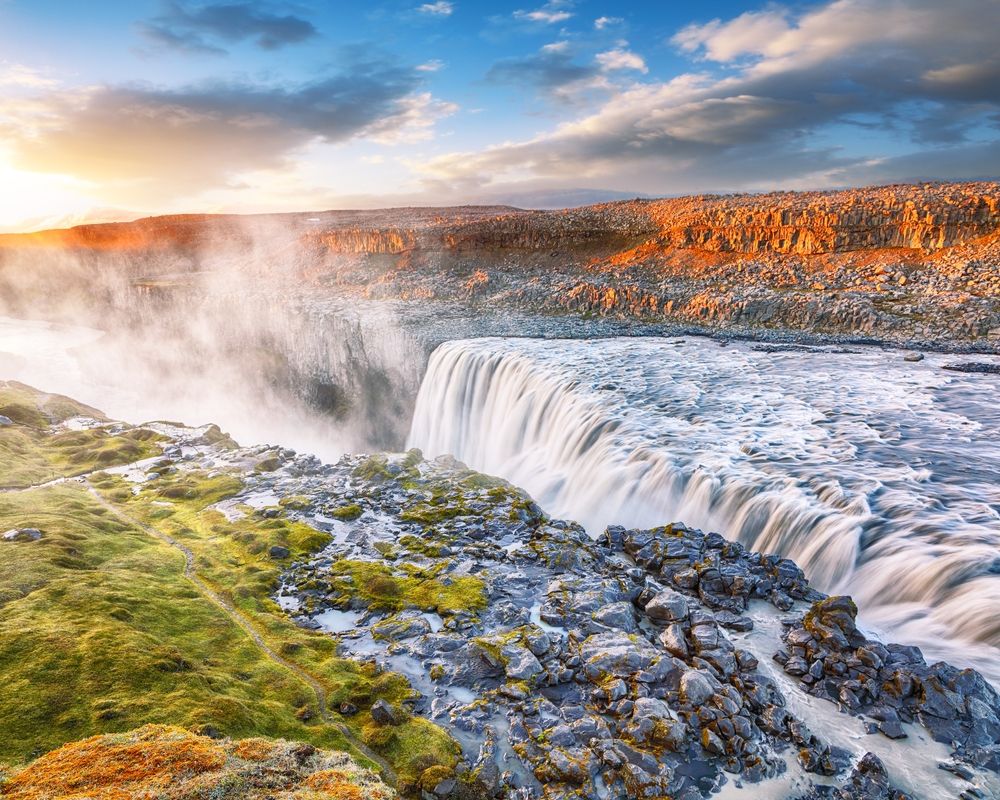
To witness raw power, nothing beats Dettifoss in the northeast. Fed by glacier meltwater, Dettifoss is famed as Europe’s most powerful waterfall – standing at its viewing area, you’ll feel the ground tremble from the force of water hurtling into the canyon below. (No surprise this location was featured as an alien landscape in a Hollywood sci-fi film!) On the flip side of the country, in the far west, the majestic Dynjandi waterfall awaits those who venture into the Westfjords. Dynjandi isn’t just one fall but a series of cascading “wedding veil” tiers tumbling down a mountainside – by the time the water reaches the bottom, it fans out into a broad curtain of white that’s unbelievably photogenic. It’s easy to see why many rank Dynjandi among Iceland’s most beautiful falls.
With literally thousands of waterfalls across Iceland, part of the joy of a road trip is discovering ones that aren’t on any tour itinerary. Have your camera ready for roadside surprises – perhaps a narrow ribbon of water plunging in the distance, or a cascade right by the highway that you can stop and have all to yourself. And remember to stay safe: paths can be slippery with spray, and the power of the water is no joke. Obey any ropes or signs (they’re there for a reason), and use common sense when snapping that perfect selfie on a ledge. With your own rental car, you have the freedom to time your visits for the best light or smallest crowds – so take advantage and enjoy these natural wonders at your own pace, mist in your hair and all.
Black Sand Beaches and Coastal Magic
The moment you step onto one of Iceland’s black sand beaches, you feel like you’ve arrived on another planet. The most famous is Reynisfjara Beach on the South Coast – a stretch of volcanic sand so dark it’s almost surreal, backed by towering hexagonal basalt columns and facing the North Atlantic’s crashing waves. Just off shore, the jagged Reynisdrangar sea stacks rise from the sea like giant trolls (legend has it they are trolls, petrified at sunrise!). This beach is stunningly beautiful but demands respect: sneaker waves here have swept unsuspecting visitors out to sea, so never turn your back to the ocean and always keep a safe distance from the water’s edge. Standing on Reynisfjara – with the thunder of the surf and salt spray misting around you – is an unforgettable experience, a mix of awe and a tinge of danger that reminds you of nature’s power.

A bit further east, beyond the village of Vík, the black sands continue their magic. In fact, they form the vast Skeiðarársandur and Breiðamerkursandur plains that lead you to Diamond Beach at Jökulsárlón Glacier Lagoon. Diamond Beach isn’t your typical “beach day” spot – instead of seashells, you’ll find glistening icebergs washed ashore, sitting on the pitch-black sand like scattered gemstones. These ice “diamonds” have broken off Breiðamerkurjökull glacier and floated through the lagoon out to sea, only to be gently deposited back on the beach by the tide. Wandering among pieces of ice – some crystal-clear, some electric blue – is like strolling through an open-air art gallery curated by nature. In low sunlight, the ice chunks truly sparkle against the black volcanic sand, and you’ll likely fill your camera’s memory card trying to capture the unreal contrast.
For an offbeat adventure on the South Coast, there’s the famous Sólheimasandur plane wreck. In 1973 a U.S. Navy DC-3 airplane made an emergency landing on the vast black desert of Sólheimasandur – thankfully, everyone survived, but the aircraft was left behind. Today its ghostly fuselage rests alone on the sand, looking like something out of a post-apocalyptic film. Reaching the plane wreck requires a flat 4 km (2.5 mile) hike (allow 1–1.5 hours round-trip) from the parking area, but it’s absolutely worth it for the eerie sight of the wreck against the backdrop of endless black sand and ocean. Bring your sense of adventure (and a windbreaker – it gets gusty out there!). Pro tip: If you prefer not to walk, local companies offer shuttle rides or ATV tours to the site. Visiting this crash site is a quintessential Iceland experience – a spot so iconic it even inspired a dedicated Zero Car Rental blog guide for adventurers and photographers on the hunt for the perfect shot.
Not all of Iceland’s beaches are black – you’ll find golden sands on the Snæfellsnes Peninsula and even a rare red-sand strand (Rauðisandur) in the Westfjords – but the volcanic beaches have a special drama. As you explore the coasts, you might also stumble upon other coastal wonders: the towering Dyrhólaey promontory, where waves have carved a giant arch through the sea cliff; cliffs teeming with seabirds like puffins (in summer) and kittiwakes; or tiny fishing hamlets tucked behind wave-battered harbor walls. Whether you’re marveling at basalt sea caves or watching seals bob in a lagoon outlet, Iceland’s shores are full of moments that remind you the ocean is never far away. With your trusty rental car, you can beach-hop from one natural wonder to the next – just remember to heed posted signs, respect the unpredictable sea, and perhaps end the day with a sunset stroll on the sand, soaking in the coastal magic.
Off the Beaten Path: East Fjords & Troll Peninsula
One joy of an Iceland road trip is leaving the crowds behind and roaming into the country’s quiet corners. Take the East Fjords, for example – a region of winding coastal roads, tiny harbors, and dramatic fjord vistas that many tourists bypass in their rush around the Ring Road. As you drive these fjords (say, from Höfn toward Egilsstaðir), don’t be surprised if you have the road almost to yourself aside from the occasional sheep or reindeer! The scenery here is breathtaking in a subtle, soul-soothing way: rugged green mountains plunging into mirror-like fjord waters, with fishing villages tucked into the coves. You might stop in Djúpivogur, a peaceful town known for its outdoor sculpture display of giant stone eggs representing local bird species, or Stöðvarfjörður to poke around Petra’s famous stone and mineral collection – a quirky little museum in what was once a local lady’s backyard, jam-packed with the glittering geodes and crystals she collected over a lifetime. Each village has its charm. In Fáskrúðsfjörður, you’ll notice some street signs in French – a nod to the town’s history as a base for French fishermen in the 19th century (there’s a French hospital museum here too). By the time you reach Egilsstaðir, the hub of East Iceland, you’ll have experienced a side of Iceland far from the tour buses. Perhaps take a detour along Lake Lagarfljót (said to hide a Loch Ness–like wyrm monster beneath its surface) or hike to the gorgeous red-striped Hengifoss waterfall. Out here, the pace is slower, the stories run deep, and every turn feels like discovery.
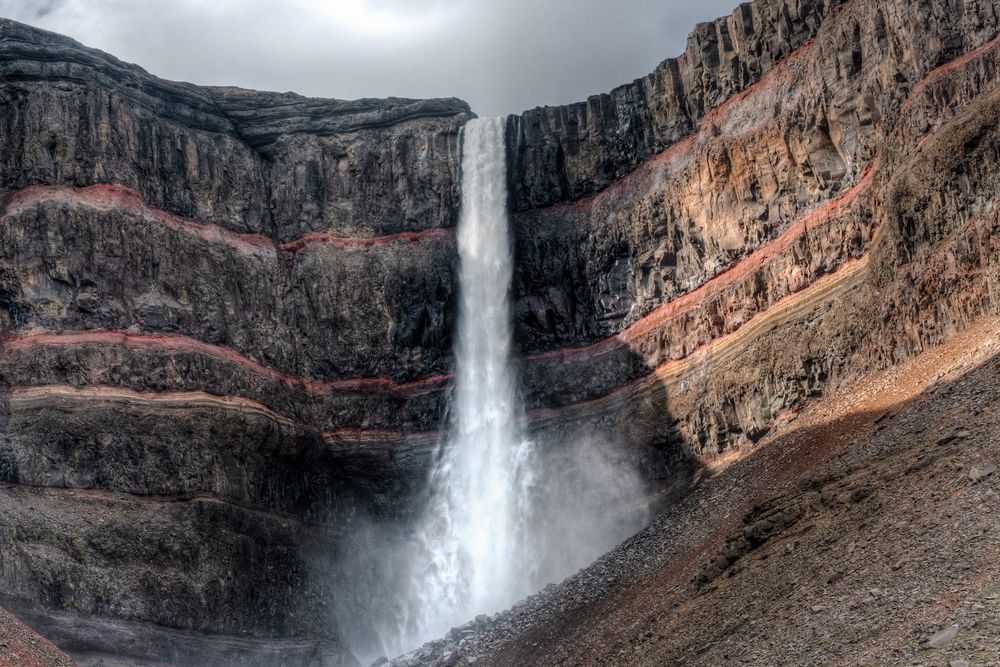
Moving northward, another detour beckons: the Tröllaskagi peninsula (literally the “Troll Peninsula”) in North Iceland. This mountainous peninsula between Akureyri and Skagafjörður is a paradise of alpine scenery and coastal charm. Driving the Ring Road is great, but veering off onto Route 82/76 around Tröllaskagi is next-level – expect narrow tunnels, clifftop roads, and views over the Arctic Ocean that will have you pulling over for photos again and again. You’ll pass through fishing towns like Siglufjörður, a once-thriving herring port tucked in a remote fjord. Today Siglufjörður is postcard-pretty and home to one of Iceland’s best museums – the award-winning Herring Era Museum, where you can walk through recreated salting stations and docks and feel the atmosphere of Iceland’s early-20th-century fishing boom. Even if you’re not a “museum person,” this one is a delight. Further along, consider a pit stop at Hofsós – not only for the cute turf-house exhibits by the harbor, but for its cliffside geothermal swimming pool. A relaxing soak in Hofsós’s warm infinity pool gives you an unforgettable view over Skagafjörður bay; it’s a simple local pleasure that most travelers on tight schedules miss entirely. By the time Tröllaskagi’s coastal route rejoins the main highway, you’ll have a newfound appreciation for Iceland’s remote communities and the joys of slow travel.
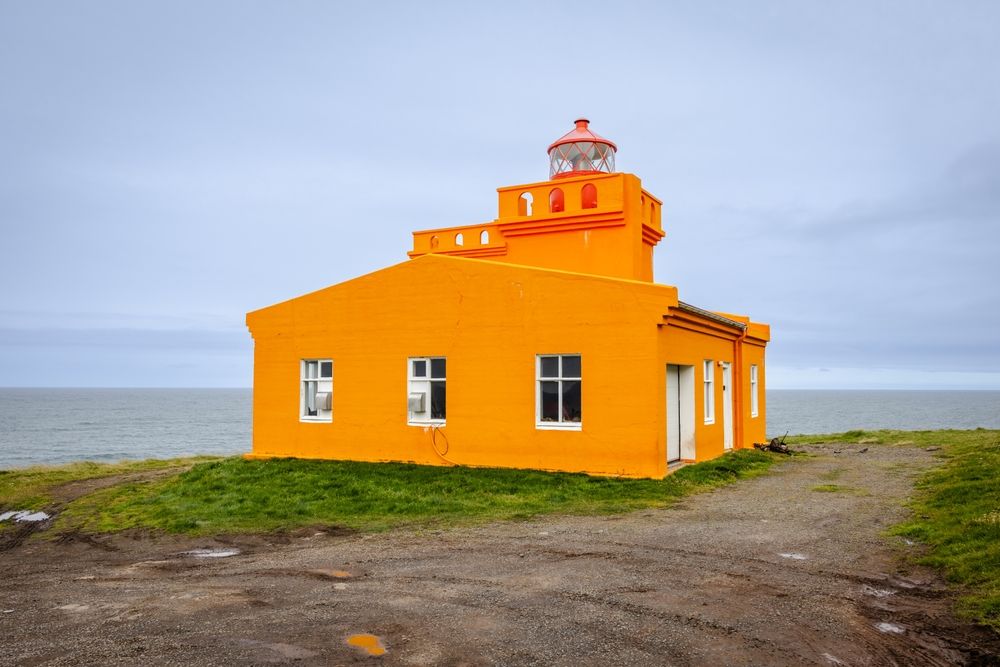
These off-the-beaten-path regions – the East Fjords and the Troll Peninsula – showcase Iceland at its most authentic and tranquil. You’ll encounter one-lane bridges, hear folklore and village history from friendly locals at small-town cafes, and maybe find a hidden waterfall or quiet black-sand cove all to yourself. It’s the kind of exploration that packaged tours can’t deliver, and exactly why having a rental car is golden. Pro tip: Fill your gas tank whenever you can in these areas (villages can be 100+ km apart), and embrace the unrushed pace. With Zero’s reliable vehicle and local expertise just a phone call away, you can confidently venture down less-traveled roads – often where the real Iceland reveals itself.
Westfjords: Where the Wild Still Rules
Jagged peninsulas thrusting into the Arctic Sea, sheer cliffs teeming with seabirds, gravel roads curling around fjords without another car in sight – welcome to Iceland’s Westfjords. This vast northwestern region is Iceland’s wild frontier, often dubbed the country’s best-kept secret. Only about 5% of travelers make it out to the Westfjords, and those who do are rewarded with unspoiled landscapes and old-world tranquility that feel a world apart from the busy Golden Circle. Out here, distances are long, villages are few (and tiny), and nature reigns supreme.
Driving in the Westfjords is an adventure in itself. You’ll wind around countless fjords on narrow coastal roads, sometimes unpaved, with dramatic views at every turn. One minute you’re overlooking a glassy inlet reflecting snow-capped peaks; the next, you’re cresting a gravel mountain pass with the ocean stretching to the horizon. Don’t be alarmed if you have to brake for sheep lounging in the middle of the road – they truly own the place out here. Eventually you’ll reach little towns like Ísafjörður, the unofficial capital of the Westfjords (population a whopping 2,600). Ísafjörður’s scenic setting – tucked beneath towering mountains – and its cluster of 19th-century wooden buildings give it a charming old-harbor vibe. It’s a great place to enjoy fresh seafood (try the plokkfiskur fish stew at a local café) or visit the Westfjords Heritage Museum to learn about the region’s seafaring history. Yet even Ísafjörður feels like a bustling metropolis compared to the tiny settlements further afield.
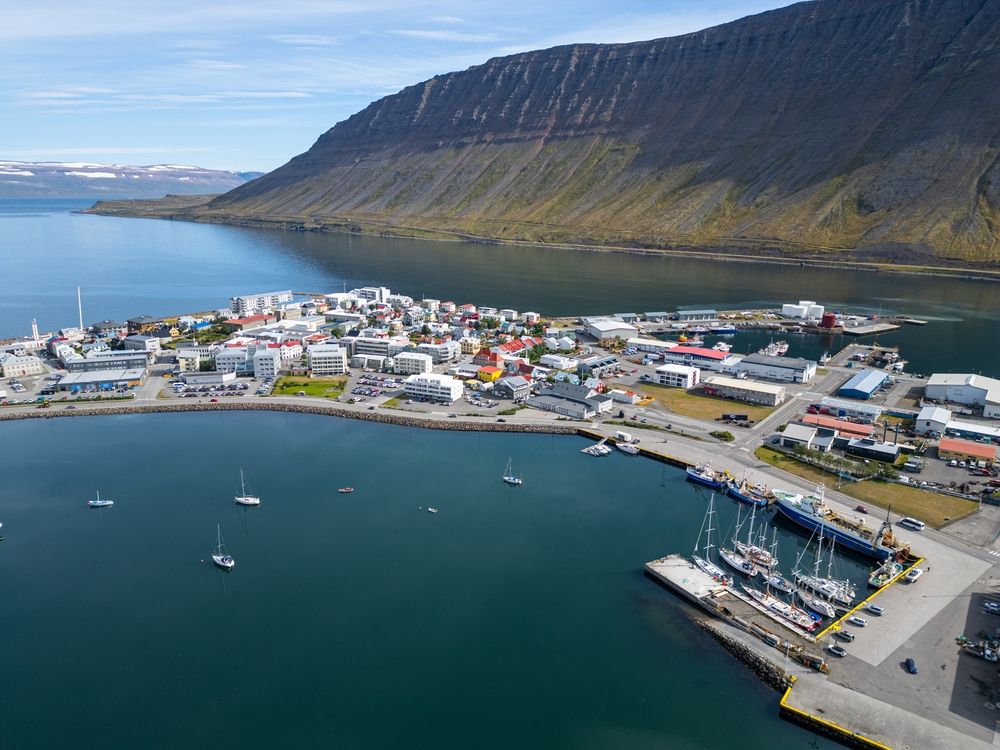
The natural highlights in the Westfjords are simply jaw-dropping. Take Dynjandi, for instance – often called the jewel of the Westfjords. After a long, winding drive down one remote fjord and up another, you’ll spot Dynjandi cascading down a mountainside like a bridal veil unrolling. A short hike brings you right up to its base, passing several smaller waterfalls (each pretty in its own right) until you stand in Dynjandi’s spray, listening to its roar. It’s a moment you won’t forget – not least because you likely had to earn it via a long gravel road! Another must-see is Látrabjarg, the westernmost point of Iceland (and Europe, if we exclude the Azores). Látrabjarg is a towering cliff stretching 14 km long and up to 440 m high, famous for its puffin colonies in summer. Imagine standing at the very edge (safely, on your belly ideally – it’s a sheer drop) watching hundreds of adorable puffins nesting and fluttering about just meters away, utterly unbothered by your presence. It’s pure wilderness magic. Besides puffins, these cliffs host tens of thousands of razorbills, guillemots, fulmars and more – a symphony of seabird calls and a frenzy of wings against the ocean backdrop.
Everywhere in the Westfjords, you’ll find touches of raw, quirky Icelandic character. Maybe you’ll soak in a random roadside hot spring tub with a million-dollar view (hello, Drangsnes hot pots!). Or perhaps you’ll visit the peculiar Museum of Sorcery & Witchcraft in the village of Hólmavík, which delves into local lore of magic and witch hunts – complete with creepy exhibits like a pair of “necropants” made from human skin (yikes!). The roads may be rough and the distances vast, but the Westfjords will steal the heart of any nature lover. Here, you truly feel off the grid – no traffic lights, no chain hotels, often no cell signal – just you, the road, and Iceland in its most primal form.
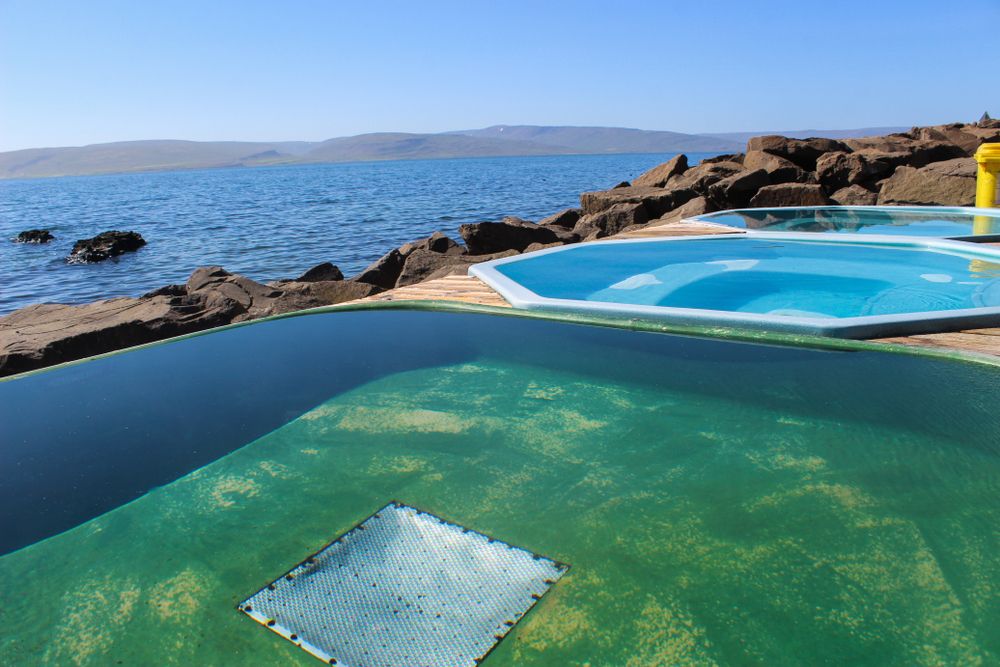
Exploring the Westfjords with a capable rental car is a game-changer. You’ll want a vehicle that can handle steep hills and gravel bends confidently (Zero’s fleet offers plenty of 4x4 options well-suited for this). Plan extra driving time – 200 km might take 4+ hours out here with photo stops – and keep an eye on your fuel gauge. But the payoff is immense. As you park by an empty cliffside to watch the midnight sun paint the sky, or pull over to let a family of Arctic foxes scamper across the road at dusk (a lucky sight, but it happens), you’ll understand why the Westfjords is less a destination and more a journey back in time. In the Westfjords, the wild still very much rules – and that’s exactly the allure.
Snæfellsnes: Iceland in Miniature
If you could condense the diversity of Iceland into one region, it would be Snæfellsnes. This 90-km-long peninsula extending into the Atlantic is often nicknamed “Iceland in Miniature” (a title proudly used by the West Iceland tourism board) – and for good reason. Within a few hours’ drive, Snæfellsnes offers a sampler of nearly every landscape that makes the country famous: mossy lava fields, rugged sea cliffs, golden beaches and black beaches, charming fishing towns, sweeping coastal plains, and a snow-capped glacier volcano crowning the peninsula’s tip. It’s a microcosm of the whole island, easily accessible by car just a couple hours northwest of Reykjavík.
Snæfellsnes is dominated by Snæfellsjökull, a mystical glacier-topped volcano that inspired Jules Verne’s Journey to the Center of the Earth. On clear days, you can see Snæfellsjökull’s white dome shimmering on the horizon from over 100 km away. The volcano is the centerpiece of Snæfellsjökull National Park, where you can explore lava tubes, craters, and eerie basalt formations. A short climb up Saxhóll Crater, for instance, rewards you with panoramic views over mossy lava fields and the distant ice cap of the glacier. Down along the coast, you’ll find Djúpalónssandur, a pebbly black beach strewn with twisted shipwreck remains (rusted metal fragments from a fishing trawler that wrecked here in 1948) and four “lifting stones” once used by local fishermen to test their strength.
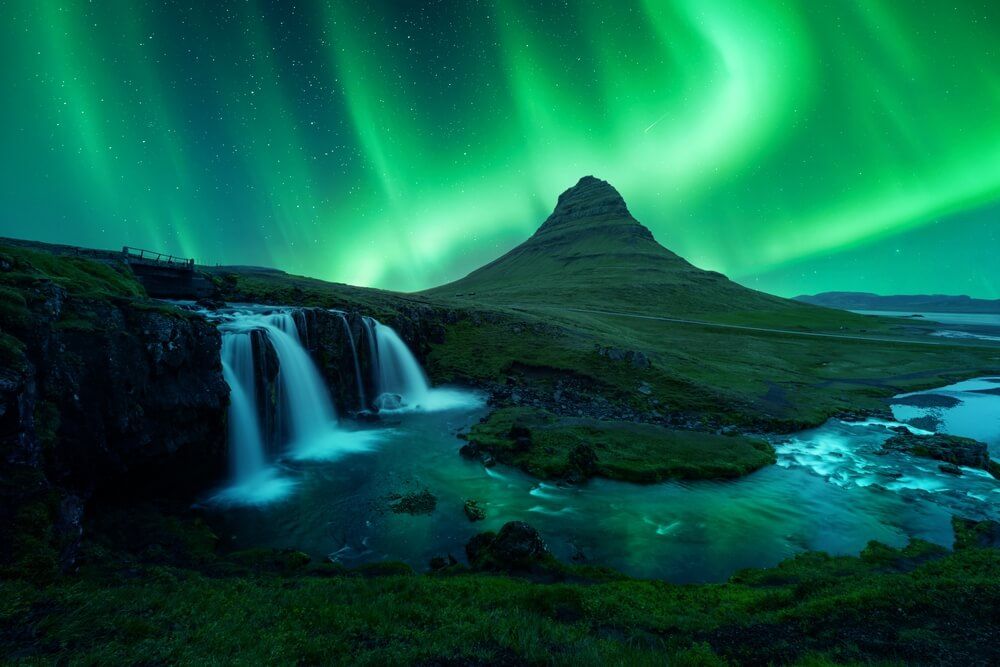
Perhaps the most photographed spot on Snæfellsnes is Kirkjufell, the cone-shaped “Church Mountain” that Game of Thrones fans might recognize. Rising alone next to the sea near the town of Grundarfjörður, Kirkjufell is striking from all angles – but the money shot is from the nearby Kirkjufellsfoss waterfall, where people line up to capture the small falls with Kirkjufell as the backdrop. Sunset on a summer night, when the sky turns pink behind the mountain, is pure magic. Another favorite stop is the Arnarstapi cliffs on the south coast, where a walking trail leads you along dramatic bird-filled ledges between the tiny hamlets of Arnarstapi and Hellnar. Here you’ll see Gatklettur – a natural stone arch spanning the surf – and columnar basalt cliffs that make for fantastic photos. Don’t leave the peninsula without swinging by the photogenic Búðakirkja, the little black church at Búðir. Standing alone on a field of lava with a backdrop of ocean and glacier, this historic church is simplicity meets drama – a photographer’s dream in any weather, it is also an amazing place for aurora and northern light hunting!
Snæfellsnes packs so much into a small area that it’s become a beloved road trip within a road trip. You can drive the whole peninsula loop in a day (many even do it as a long day trip from Reykjavík), but spending a night or two in the cozy villages – say, Stykkishólmur or Ólafsvík – allows you to soak in the atmosphere. Stykkishólmur, with its colorful old timber houses and busy harbor (ferry gateway to the Westfjords), even features in The Secret Life of Walter Mitty film. It’s worth climbing the small Súgandisey hill by Stykkishólmur’s red lighthouse for lovely views over Breiðafjörður’s countless islands. And keep an eye out for wildlife: seals often lounge on the rocks at Ytri-Tunga beach (on Snæfellsnes’s south side), and orcas are occasionally spotted offshore in winter, hunting herring in the fjords.
Fun fact: Snæfellsnes and the adjacent Westfjords will be prime territory for a total solar eclipse in August 2026, when the moon’s shadow will sweep directly over western Iceland. (Zero’s team has even created a special road trip guide for eclipse chasers – talk about planning ahead!) Whether you visit for an ordinary day or an extraordinary celestial event, Snæfellsnes delivers a greatest-hits collection of Icelandic nature. As you drive back toward the capital after a day of volcanoes, waterfalls, and seaside vistas, you’ll understand why this little peninsula looms so large in Iceland’s lore.
Wildlife Encounters
Whales: The waters around Iceland are a playground for marine giants. In fact, Iceland is one of Europe’s top whale-watching destinations. The small town of Húsavík in the north has earned the nickname “Whale Watching Capital of Iceland” – here in Skjálfandi Bay, local operators routinely spot humpback whales, minke whales, and even the occasional blue whale or pod of orcas during summer months. (There’s nothing like the thrill of seeing a 30-ton humpback breach the surface beside your boat!) You can also join whale tours from Reykjavík or Akureyri, but sightings in Húsavík are often the most reliable due to the rich feeding grounds. Tip: Bundle up and bring binoculars – even in summer it gets chilly out at sea. And keep your eyes peeled for other marine life too: playful white-beaked dolphins often race alongside the boats, and puffins frequently bob on the waves near their nesting cliffs.
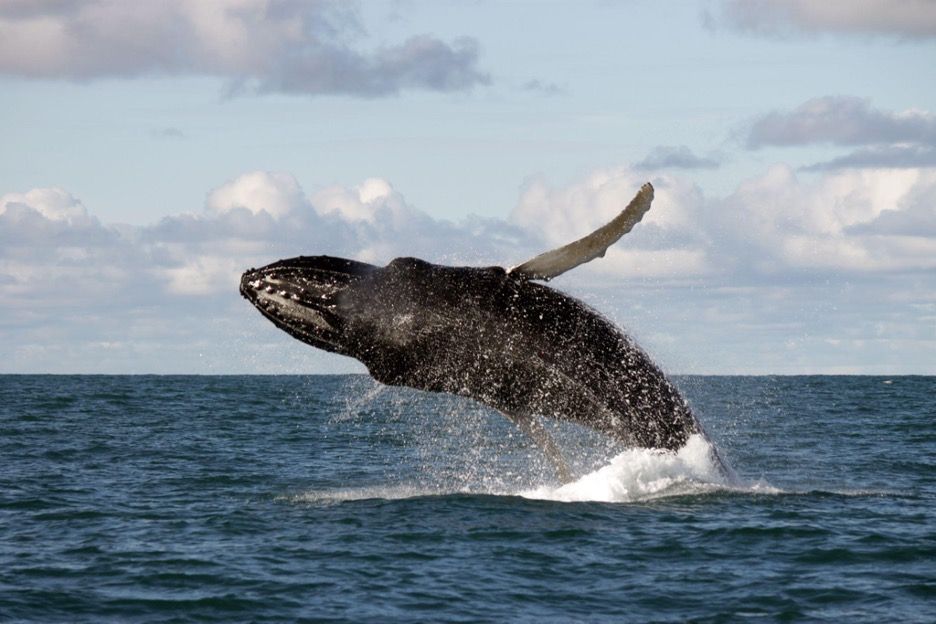
Puffins: These adorable “clowns of the sea” are a bucket-list sight for many visitors. With their bright candy-corn beaks and comical waddle, Atlantic puffins are actually plentiful in Iceland – around 8 to 10 million of them nest here each summer! One of the easiest places to see puffins up close is Látrabjarg in the Westfjords (late May through mid-August), where thousands of puffins nest in burrows atop the huge cliffs. They’re surprisingly unafraid of humans; you can often get within a few feet (just don’t disturb them or venture too close to the cliff edge). On the south coast, the Dyrhólaey cliffs also host puffin colonies, as do the offshore Westman Islands (home to the world’s largest puffin colony). Watching these pint-sized birds take off is a delight – they leap from the cliff and flap furiously, often cartwheeling a bit until they catch the ocean wind. If you visit in late August, you might witness the charming tradition of puffling rescues in coastal towns, where locals help stray baby puffins (drawn astray by street lights) find their way to the sea.
Reindeer: Yes, Iceland has reindeer – but only in one region. East Iceland is home to a few thousand wild reindeer that were imported in the 18th century and now roam the highlands and eastern fjords. In winter, they often descend from the mountains to graze near the coastal farms and roads (so drive slowly in the Eastfjords, especially at dusk – you might round a bend and find a herd by the roadside!). Seeing reindeer with a backdrop of snowy peaks or a glittering fjord is like stepping into a Nordic fairy tale. In summer, they retreat to higher elevations, so sightings become rarer (organized reindeer safari tours from Egilsstaðir can help if you’re keen). And for an ultra-Icelandic experience: in December, some east fjord towns host “reindeer meat festivals” where you can sample delicacies like reindeer pâté or smoked reindeer – a true local treat for the curious foodie.
Of course, those are just the headliners. Throughout your journey you’ll encounter Icelandic horses (don’t call them ponies – they’re small but mighty!) grazing in emerald fields; flocks of sheep wandering adorably across roads; perhaps an Arctic fox darting across a remote Westfjords hillside. Summer brings waves of migrant birds – you might spot whooper swans on a lake or a great skua patrolling the cliffs. And if you visit in winter, keep scanning the shorelines for the silhouette of a polar bear… (Just kidding – though very rarely a bear drifts over on sea ice from Greenland!). The key is to slow down and look. With a car and a sense of curiosity, you’re bound to have magical wildlife moments – often when you least expect them.
Road Trip Tips & Cultural Finds
Essential Driving Tips:
- Plan for weather & roads: Iceland’s weather is famously fickle. Always check the weather forecast (vedur.is) and road conditions (umferdin.is) each day before heading out. Sudden winds, rain, or snow can close roads or make driving hazardous – better to know in advance. If a road (or mountain pass) is marked closed, do not attempt it. Flexibility is key for a safe adventure.
- Mind the speed (and headlights): Speed limits are typically 90 km/h on rural paved roads and 50 km/h in towns (lower on gravel). They’re strictly enforced by speed cameras and steep fines. Also, keep your headlights on at all times, even under the midnight sun – it’s the law. Buckle up, and put the phone away – driving in Iceland demands full attention (those sheep love to dash out!).
- Fuel up when you can: In rural Iceland, gas stations are few and far between. Top off your tank whenever you hit half and see a station – the next one might be 100 km away. Most pumps accept credit/debit cards (with PIN); many stations double as convenience stores or cafés. (Grab an infamous gas-station hot dog with fried onions – surprisingly delicious – or a cup of coffee to go. An Icelandic road trip isn’t complete without at least one pylsa hot dog stop!)
- No off-roading, ever: It is illegal to drive off marked roads or tracks in Iceland – even on seemingly barren sands or mossy hills. The ecosystem is fragile, and tire ruts can scar the land for decades. So stick to the roads (and never drive onto closed highland F-roads unless you truly know what you’re doing and your rental contract allows it). Likewise, don’t attempt river crossings in a rental car – it’s a recipe for disaster and a voided insurance.
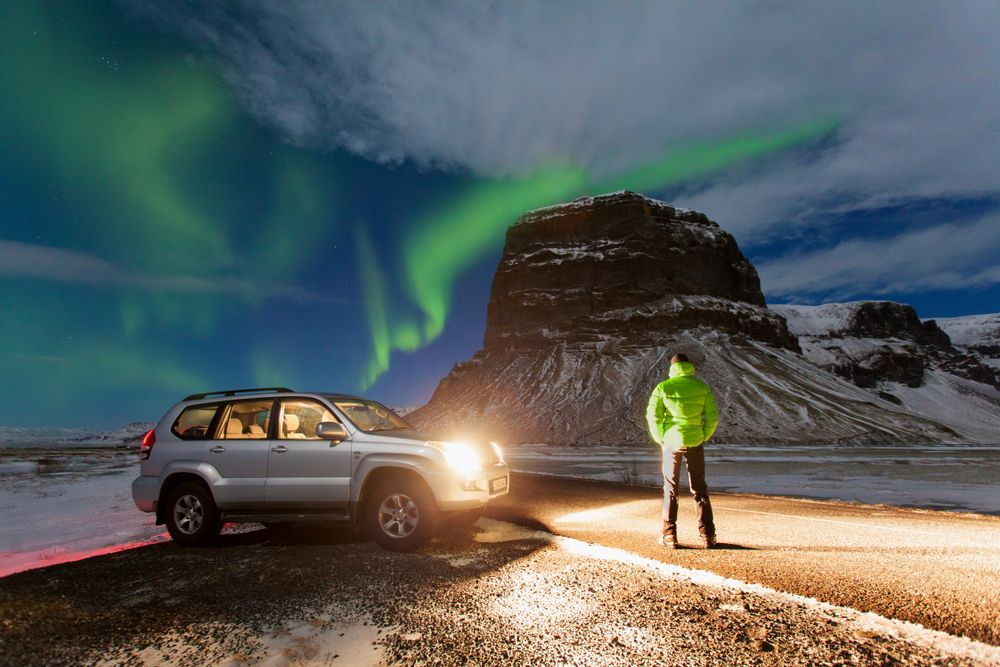
Stay alert and considerate: Outside urban areas, many roads are narrow, with single-lane bridges in the mix. Slow down and yield to oncoming cars as needed – the general rule is whoever reaches the bridge first has right of way. Use turnouts to let faster cars pass. And keep an eye out for livestock on the road – sheep and Icelandic horses graze freely in summer and have zero road sense. If you see a “Malbik endar” sign, that means pavement ends and gravel begins – slow down to avoid skidding on loose gravel when the surface changes.
Don’t be that tourist: Avoid the classic blunders. Don’t stop in the middle of the road (or on the shoulder of a narrow road) to take pictures – find a safe pull-off. Hold onto your car door on windy days so it doesn’t get wrenched (or hit another vehicle). In winter, clear all the snow and ice off your windshield (and lights) before driving – it’s dangerous not to. Basically, use common sense and you’ll be fine (check out our 8 classic rental mistakes to avoid so you can learn from others’ oopsies and be a road-trip pro).
Save money smartly: Traveling Iceland doesn’t have to break the bank. Visit in shoulder seasons like May or September for lower rates and still-great weather. Book your car and lodging well in advance – last-minute anything in summer is expensive. Take advantage of included extras: Zero, for instance, includes GPS and unlimited mileage, so you won’t get nickel-and-dimed. Pack a reusable water bottle (Iceland’s tap water is pure and free) and maybe some supermarket snacks to avoid constant restaurant meals. And remember, a slightly higher upfront rental price that includes insurance and extra drivers may end up cheaper than a bargain deal that adds those later. (See our full guide to saving money on car rentals for more wallet-friendly tips).
Cultural Finds: An Iceland road trip isn’t only about the sights – it’s also about experiencing the local culture along the way. Take time to chat with locals when you can, whether it’s a farm guesthouse owner sharing stories over coffee or a fisherman in a tiny harbor explaining the day’s catch. Icelanders are warm, witty, and nearly all speak excellent English (though they’ll appreciate if you learn a couple of Icelandic words like “Takk fyrir” – thank you). Each region has its own folklore and flavors – you might try skyr (thick yogurt) at a dairy farm, taste rich lamb stew at a country café, or even nibble fermented shark (if you dare) at a heritage museum. Keep an ear out for local music on the car radio too – you might discover your new favorite Icelandic band as the soundtrack to your drive.
If your itinerary allows, spend your final day or night in Reykjavík to soak up some urban culture. After days of natural wonders, the world’s northernmost capital offers a delightful change of pace. Stroll the colorful streets downtown to find murals and street art, pop into shops selling handmade wool lopapeysa sweaters, or visit landmarks like the modernist Hallgrímskirkja church (ride the elevator up for a panoramic city view). Hungry? Reykjavik’s food scene is famously eclectic – you can sample Icelandic cod straight off the boat, or dine on Thai, Mexican, or vegan fare all within a few blocks. For a dose of history, check out the National Museum or the Saga Museum to deepen your appreciation of the Viking heritage you’ve been touring through. And definitely do as locals do and hit a geothermal swimming pool – Reykjavík has many. Nothing beats unwinding in a hot tub at Sundhöllin or Laugardalslaug pool, chatting with Icelanders about the day’s adventures. In the evening, you might catch some live music at a cozy bar or simply enjoy a late-night walk by the Old Harbor under the midnight sun or northern stars. The Visit Reykjavík website has plenty of tips on concerts, events and hidden gems in the city. After a long journey through wild landscapes, ending in Reykjavík’s friendly buzz – perhaps with a celebratory local craft beer in hand – is the perfect finale to your Icelandic road trip.
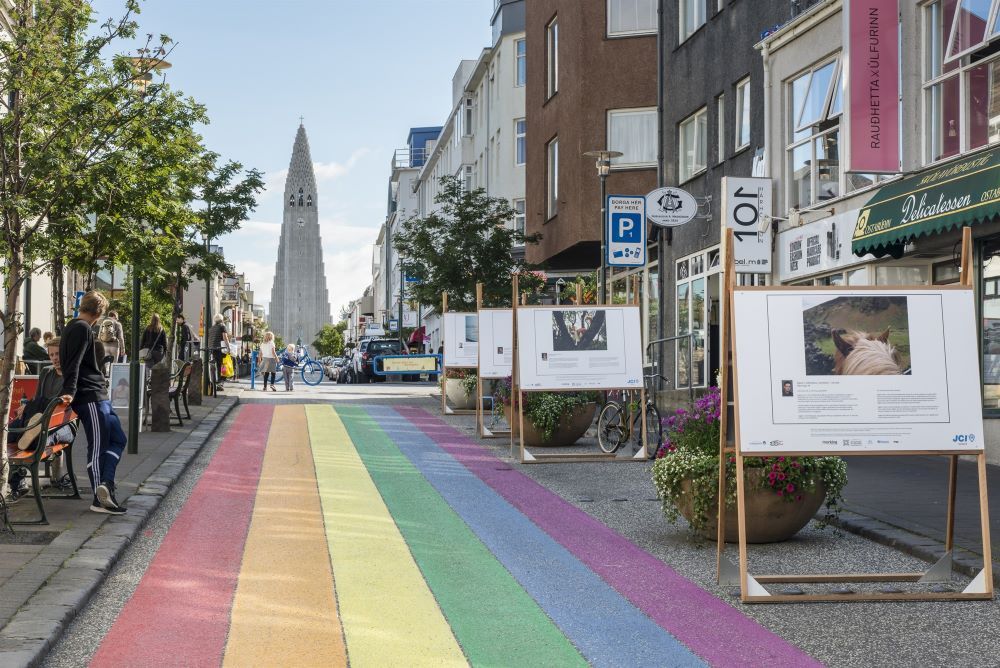
Ready to embark on your own epic Iceland road trip? With its local expertise, all-inclusive pricing, and flexible service, Zero Car Rental is ready to be your ideal car rental partner. Whether you need a sturdy 4x4 for the Westfjords or a comfy hybrid for the Ring Road, Zero’s fleet has you covered – with zero hassle and zero hidden fees. Enjoy easy keybox pickup at Keflavík Airport or in Reykjavík, 24/7 roadside assistance from our team of locals, and full insurance included in every rental so you can explore with total peace of mind. Don’t just dream about Iceland’s wonders – drive out and experience them! Visit our website or book your Iceland adventure car with Zero Car Rental today, and get ready to hit the open road. You will see why Zero is the best car rental in Iceland.